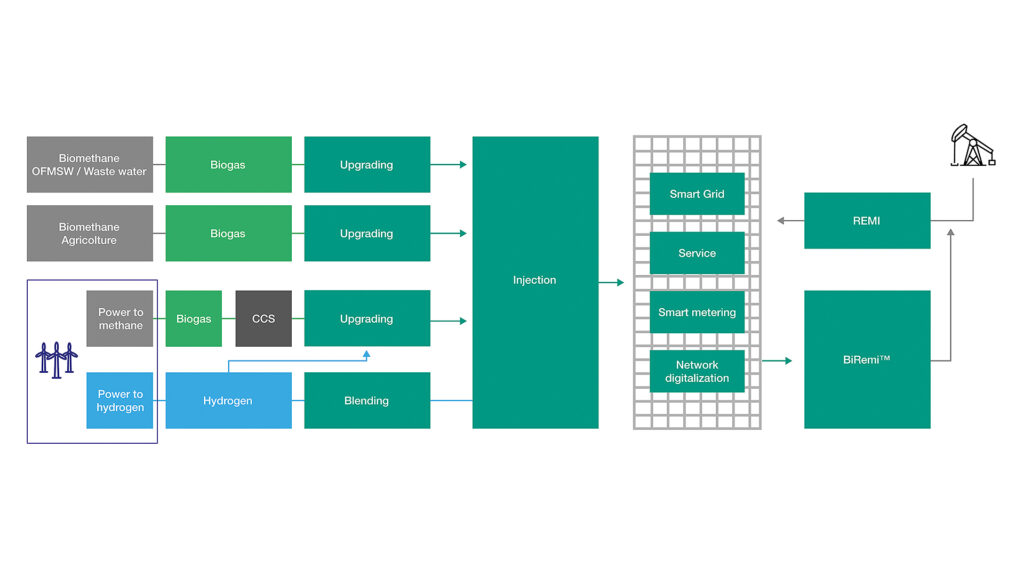Pietro Fiorentini’s systemic approach
The implementation of the smart grids of the future requires the continued development of systems that are compatible with renewable sources and solutions that are capable of interacting with one another.
Faced with such a complex scenario, Pietro Fiorentini has chosen to adopt a systemic approach, i.e. to pursue simple connections that interact with each other to create resilient systems.
The 4 steps for Smart Gas Grids implementation
Our vision foresees four steps to achieving the maximum level of Smart Gas Grids implementation:
- Widespread monitoring, achieved thanks to the expansion of the sensor network.
- Configuration with local automation logic and remote control to dynamically balance the network structure.
- Through the aggregation and analysis of collected data, forecasts and optimisation actions using artificial intelligence technologies.
- The adoption of fully autonomous, integrated and resilient systems that respond to smart energy and smart city logics.
While we can now say that the first two steps have been completed, Pietro Fiorentini’s commitment is now directed towards the next steps. The ultimate goal is to achieve full integration between gas distribution networks in all their forms.
Smart Grids and renewable gases
Creating sustainable, smart grids for gas distribution networks means devising solutions to manage flows that come from sources with different characteristics, such as hydrogen and biomethane, and which come from multiple, decentralised production locations.
The scenario ahead of us is extremely complex and requires systems capable of absorbing local production and maintaining the balance and structure of the entire network.

Smart Grids and renewable gas
To this end, Pietro Fiorentini has designed and developed BiRemi™, the bidirectional primary station able to maximise the capacity of the distribution network to receive gas produced from renewable sources through the re-injection of any overproduction on the transport network.
LIFE 13 Green Gas Network
Today, Pietro Fiorentini is already able to implement automations that dynamically manage the entire grid. The most recent example of this is the LIFE 13 Green Gas Network project created in collaboration with RetiPiù and Terranova, a leader in the energy and utilities market and an integral part of the Pietro Fiorentini Group since 2011.
With the aim of fixing the problem of expected leaks that occur in natural gas distribution networks, a system consisting of a physical device and software infrastructure has been developed. The device detects pressure trends and reacts based on the dynamic modulation profile previously developed by a control centre operator. The operator has the possibility of monitoring the current pressure trend and intervening remotely via the software platform.
The result is a self-regulating network that can adapt the operating pressures to real needs, thereby preventing excess pressure and limiting emissions from the expected leakages.
The project was nominated as one of the finalists in the Climate Change category of the 2019 edition of the LIFE Awards, the tool with which the European Union supports entities working to protect the climate and the environment.
Download the LIFE 13 project case study.

